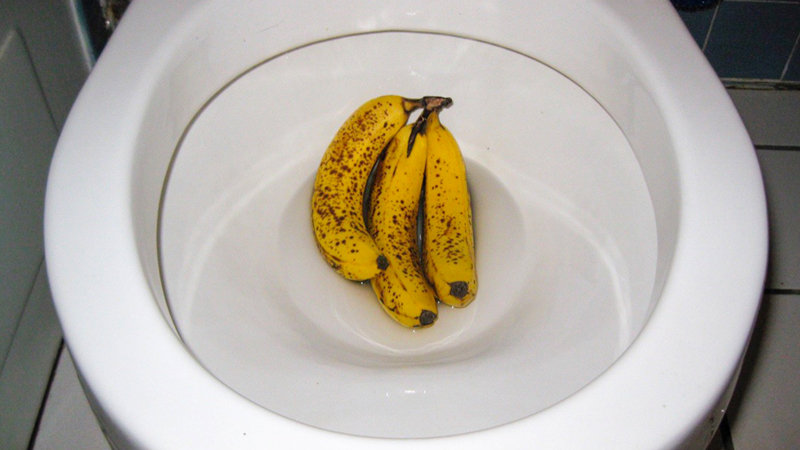Can One to Dispose of Food Down the Toilet?
Can One to Dispose of Food Down the Toilet?
Blog Article
Right here further down you can discover lots of brilliant data about Flushing Food Down the Toilet?.

Intro
Many individuals are usually confronted with the dilemma of what to do with food waste, especially when it comes to leftovers or scraps. One typical inquiry that arises is whether it's okay to purge food down the toilet. In this short article, we'll look into the reasons why people might take into consideration purging food, the effects of doing so, and alternate methods for proper disposal.
Reasons why individuals could consider flushing food
Lack of recognition
Some people may not be aware of the prospective injury caused by flushing food down the bathroom. They may wrongly believe that it's a safe practice.
Benefit
Flushing food down the toilet might look like a fast and simple remedy to disposing of undesirable scraps, especially when there's no neighboring trash bin offered.
Negligence
Sometimes, people might simply pick to flush food out of large laziness, without thinking about the effects of their actions.
Repercussions of flushing food down the bathroom
Ecological influence
Food waste that ends up in waterways can contribute to contamination and injury marine ecosystems. In addition, the water made use of to flush food can strain water resources.
Plumbing concerns
Purging food can result in clogged up pipes and drains, creating costly pipes repair services and inconveniences.
Sorts of food that need to not be flushed
Fibrous foods
Foods with fibrous textures such as celery or corn husks can get tangled in pipes and create obstructions.
Starchy foods
Starchy foods like pasta and rice can soak up water and swell, bring about obstructions in pipes.
Oils and fats
Greasy foods like bacon or cooking oils need to never be purged down the bathroom as they can strengthen and trigger obstructions.
Proper disposal methods for food waste
Making use of a garbage disposal
For homes geared up with garbage disposals, food scraps can be ground up and flushed through the pipes system. Nevertheless, not all foods are suitable for disposal in this manner.
Recycling
Certain food product packaging materials can be recycled, lowering waste and lessening environmental influence.
Composting
Composting is an environmentally friendly way to deal with food waste. Organic materials can be composted and made use of to enrich dirt for horticulture.
The importance of appropriate waste monitoring
Reducing ecological injury
Appropriate waste monitoring methods, such as composting and recycling, aid decrease contamination and maintain natural resources for future generations.
Protecting plumbing systems
By preventing the technique of flushing food down the commode, property owners can avoid expensive pipes fixings and keep the integrity of their pipes systems.
Conclusion
In conclusion, while it may be tempting to flush food down the toilet for convenience, it is essential to recognize the prospective repercussions of this action. By adopting correct waste monitoring methods and disposing of food waste properly, people can add to much healthier pipes systems and a cleaner atmosphere for all.
FLUSH FOOD DOWN THE TOILET?
FLUSHING FOOD CAN CAUSE BLOCKED DRAINS IN YOUR HOME
All of the plumbing fixtures in your home are connected to the same sewer pipe outside of your home. This outdoor sewer pipe is responsible for transporting all the wastewater from your home to the Council sewer mains. Even small pieces of food that go down the kitchen sink can cause problems for your sewer. It should therefore be obvious that flushing larger bits of food, such as meat, risks a clog in either the toilet itself or the sewer pipes. Flushing greasy food is even more problematic because oil coagulates when it cools, coating the interior lining of your pipes.
THE TOILET IS NOT A BIN
Food isn’t the only thing that people shouldn’t be flushing down the toilet. People use the toilet to dispose of all kinds of things such as tampons, makeup wipes, dental floss, kitty litter and even underwear. Water goes to great lengths to educate residents about the high costs and stress placed on wastewater treatment systems simply from people flushing the wrong stuff down the toilet. It costs taxpayers millions of dollars each year, and homeowners thousands in blocked drain repairs.
FLUSHING FOOD IS A WASTE OF WATER
Flushing food is a waste of our most precious resource - water. In June this year Level 1 water restrictions were introduced to protect water supply from drought conditions. Much of New South Wales continues to be affected by prolonged drought with recent figures revealing up to 97 per cent of the state remains in drought. Depending on whether you have a single or dual flush toilet, every single flush uses between five and 11 litres of water. In the current climate this is a huge amount of water to be wasting on flushing food that should be placed in the bin (or better yet, the compost).
https://www.jabplumbingsolutions.com.au/blog/can-you-flush-food-down-the-toilet

We were introduced to that write-up on Think Twice Before Flushing Food Down Your Toilet from a buddy on our other site. Are you aware of someone else who is sincerely interested in Is it safe to flush food (especially rice) down the toilet?? Why not share it. Thank-you for going through it.
Call Today Report this page